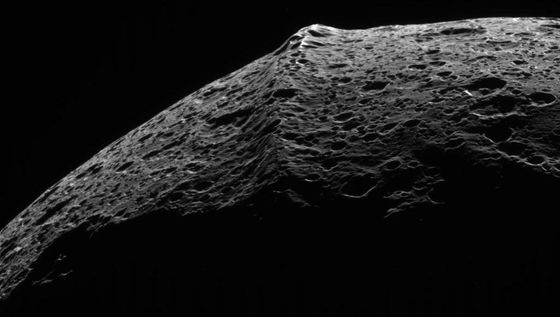Research results suggest that the Moon may have had rings like Saturn, deepening the mystery of the lack of rings on moons in the solar system today

Planets such as Saturn have beautiful rings, and
The missing rings around Solar System moons | Astronomy & Astrophysics (A&A)
https://www.aanda.org/articles/aa/full_html/2024/11/aa49453-24/aa49453-24.html
Earth's moon could've had Saturn-like rings, new study hints | Live Science
https://www.livescience.com/space/the-moon/earths-moon-couldve-had-saturn-like-rings-new-study-hints
Wait a Minute. Why Don't Any of The Solar System's Moons Have Rings? : ScienceAlert
https://www.sciencealert.com/wait-a-minute-why-dont-any-of-the-solar-systems-moons-have-rings
The most well-known ringed planet is Saturn; its rings are made up of thousands of thin, delicate concentric rings made of various sizes of ice and rock, and are kept in place by shepherd moons that use gravity to keep the rings from collapsing.
Furthermore, advances in observational technology have revealed that many other celestial bodies besides planets also have rings, such as the centaur asteroid Chariklo , which lies outside the orbit of Jupiter.

by
However, none of the moons orbiting planets have rings. Previously, it was suggested that Jupiter's moon Rhea may have a ring, which was a groundbreaking discovery, but it was later discovered to be a false report.
'Why don't the moons in our solar system have rings when the giant planets, the centaurs, and the trans-Neptunian objects have rings? This puzzle seemed counterintuitive to us, given that rings are not that uncommon, so we wanted to find out if there were fundamental, mechanical reasons that would prevent the formation and long-term stability of rings around moons,' said Mario Scerchia, an astrophysicist at the Adolfo Ibáñez University in Chile.
In a 2022 study , Scerchia and his team confirmed that rings can form around at least a single moon, but that study didn't take into account the gravitational influence of planets or other moons.
So, in a study published in the academic journal Astronomy and Astrophysics on October 30, 2024, Scerchia and his colleagues chose five planets - Earth, Jupiter, Saturn, Uranus, and Neptune - and added rings to all of the moons of these planets. They then simulated how the rings would change over the course of a million years as they were influenced by the gravity of the other moons and planets.
The researchers found that, with the exception of Mimas , which is Saturn's closest major moon to its parent planet, most moons have rings that are stable over the long term. For example, Earth's moon, the Moon, has a 95% chance of maintaining a stable ring.

by
Regarding the unexpected simulation result that does not confirm that the moons in the solar system do not have rings, but rather indicates that they must have rings, Dr. Scerchia said, 'We did not expect that a moon in a harsh gravitational environment where other moons and the parent planet disrupt the rings could maintain such a stable ring. Far from destroying the moon's rings, this harsh environment creates striped and ripple-like structures similar to Saturn's rings, giving the rings their incredible beauty.'
The simulations strengthen the idea that the lack of rings in real-life moons is not due to complex gravitational forces from other moons or planets, so Scerchia and his team suggest that the lack of rings in modern moons may be due to factors other than gravity, such as radiation from the Sun or charged particles emanating from the parent planet's magnetic field.
Some moons have signs that suggest they may have had rings in the past. For example, Saturn's moon Iapetus has a series of large ridges along its equator that could have been formed by past rings falling onto the surface of Iapetus, just as Saturn's rings are gradually falling onto the planet.

There is also a theory that small pieces of debris may be floating around Rhea as remnants of what was once a ring, and the results of this study provide support for this theory.
Scerchia and his team are now exploring the outer reaches of our solar system to find other star systems with ringed moons orbiting planets.
'I can't help but wonder what kind of myths and stories the inhabitants of other worlds with ringed moons would create. What would our stories and culture be like if our moon had rings? The possibilities are endless,' Scerrchia said.
Related Posts:
in Science, Posted by log1l_ks







